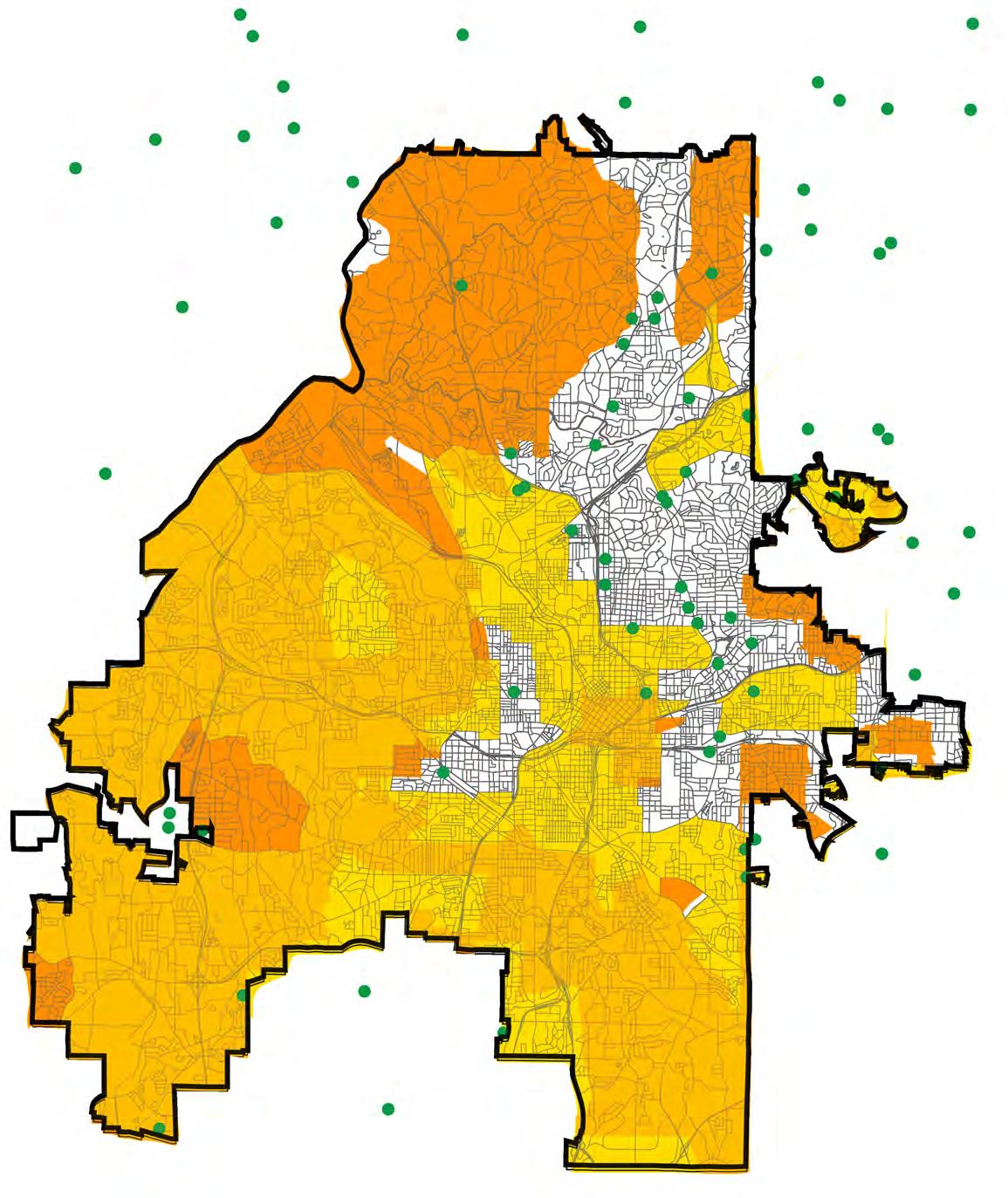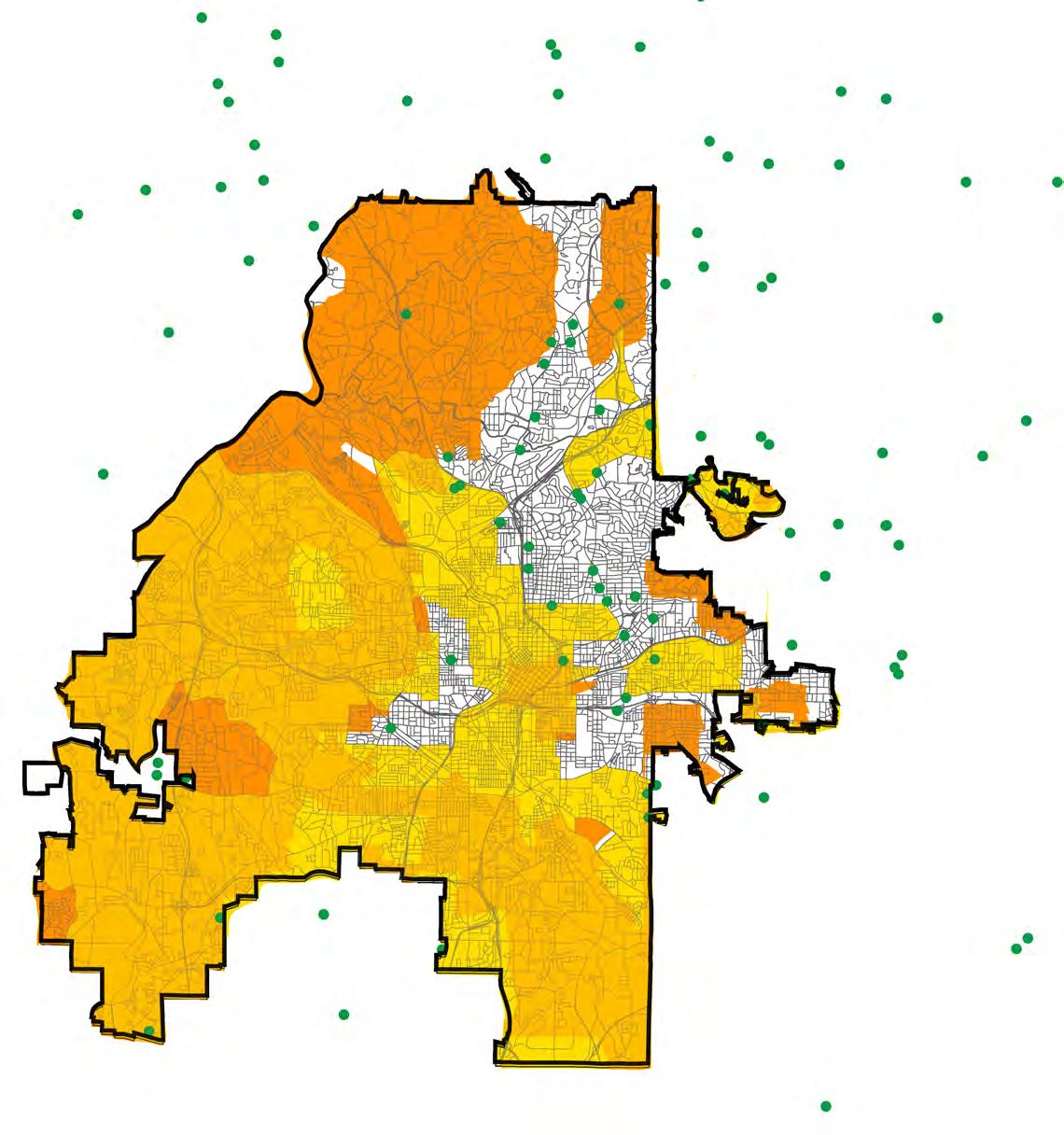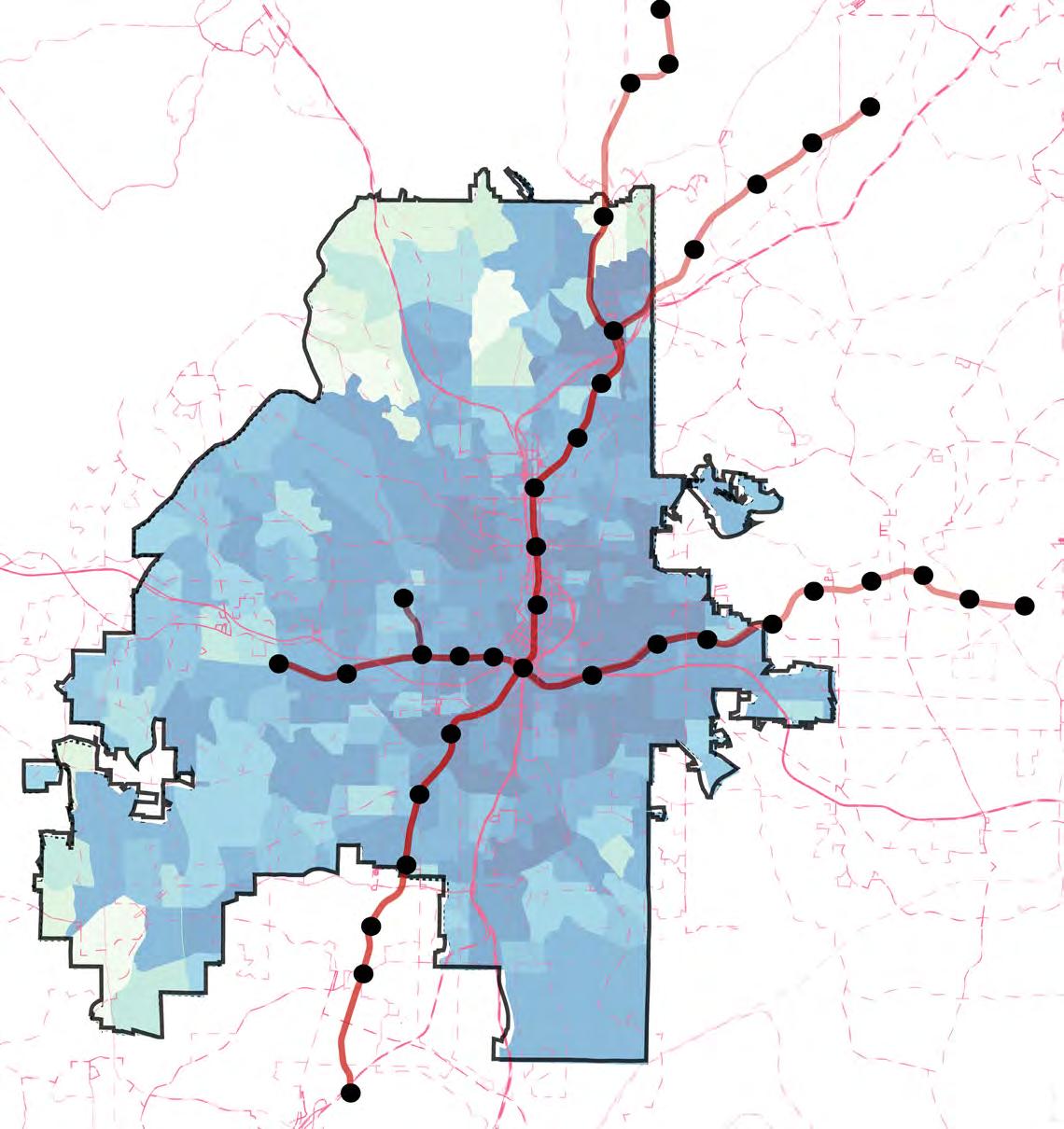
1 minute read
NUTRITIOUS FOOD ACCESS IN ATLANTA
from Graduate Portfolio
by ricardo dip


Advertisement
AREAS WITH LIMITED ACCESS TO NUTRITIOUS, FRESH FOOD ALSO HAVE HIGHER RATES OF CHRONIC ILLNESSES, POVERTY, AND LOWER RATES OF OVERALL MOBILITY
HIGHEST WALKABILITY

LOWEST WALKABILITY

History Of Grove Park
Today
1920-1930s
Grove Park was developed by Dr. Edwin Wiley Grove. The streets were named after his family members.
1960s
Donald Lee Hollowell Parkway, Grove Park’s major road, was one of Atlanta’s major corridors.
1970s
POPULATION: 4,700
POVERTY RATE: 30%
UNEMPLOYMENT RATE: 15%
NEARLY 1/3 ADULTS HAVE NO ACCESS TO A VEHICLE.
APPROX. 30% OF ITS RESIDENTS SUFFER FROM CHRONIC ILLNESSES
The area was stable until Atlanta’s suburban growth drained the vitality in the neighborhood. Many small businesses closed and were replaced by low-rent businesses. Simutaneoulsy, the area’s population and property conditions began to decline drastically.
Organizations like the Grove Park Association strive to empower the community and address issues.. Their top priorities include economic development (retail/ grocery), transportation networks, and youth services.

2010-2017
The neighborhood population decreased by 22.57% (from 6,200 residents down to 4,800), despite the Bankhead station being added in 1992.


